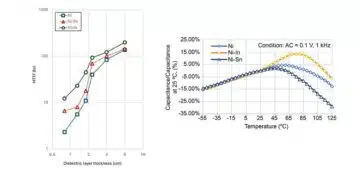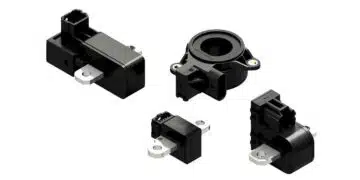Explore modern EMI shielding techniques and learn how to prevent electromagnetic interferences (EMI) from impacting sensitive electronics in this Würth Elektronik webinar.
This webinar will dig into practical strategies in housing and PCB for mitigating EMI challenges, never losing sight of solutions for emerging technologies like 5G, IoT, Industry IoT, etc., and the challenge they bring to Electromagnetic Compatibility.
Electromagnetic Interference (EMI) presents significant challenges for sensitive electronic devices, especially with the advent of 5G, IoT, and Industrial IoT technologies. This paper explores state-of-the-art EMI shielding techniques, focusing on practical strategies for housing and printed circuit boards (PCBs). It covers materials, design considerations, and mitigation strategies to enhance electromagnetic compatibility (EMC).
1. Introduction
The increasing density of electronic circuits and the higher frequencies associated with emerging technologies have made electromagnetic compatibility critical. Devices are exposed to various electromagnetic fields (EMFs), including electric and magnetic fields, which can cause malfunctions or degrade performance.
2. Fundamentals of EMI Shielding
2.1. EMI Sources and Mechanisms:
- Antennas as EMI sources (e.g., I/O interfaces, PCB traces, ground planes).
- EMI propagation through radiated and conducted pathways.
2.2. Shielding Effectiveness (SE):
- Defined as the ability of a material to attenuate EMFs.
- Measured in decibels (dB) and calculated as the ratio of incident to transmitted power.
3. Shielding Materials and Their Properties
3.1. Conductive Materials for Electric Fields:
- High conductivity materials (e.g., copper, aluminum tapes).
- Importance of low impedance for electric field attenuation.
3.2. Materials for Magnetic Fields:
- High permeability materials (e.g., ferrites) to absorb magnetic energy.
- Thickness considerations for optimal performance.
4. Advanced Shielding Solutions
4.1. EMC Gaskets:
- Types: Conductive foam, fabric-over-foam, metal gaskets.
- Optimal compression (20-30%) for performance.
- Guidelines for mechanical integration and grounding.
4.2. EMC Tapes:
- Metallic and textile tapes for flexible applications.
- Application techniques to ensure effective conductivity.
4.3. Board-Level Shielding:
- Use of shielding cans, fences, and SMP gaskets.
- Design tips for minimizing EMI at the PCB level.
5. Magnetic Absorbers
5.1. Function and Types:
- Flexible and rigid absorbers for different frequency ranges.
- Application in reducing crosstalk and suppressing unwanted emissions.
5.2. Integration Techniques:
- Placement strategies for optimal noise suppression.
- Combining absorbers with thermal management for efficiency.
6. Case Studies and Measurement Data
- Real-world examples of EMI issues and resolution strategies.
- Data from simulation and laboratory measurements demonstrating effectiveness.
7. Conclusion
EMI shielding is an evolving field, critical for the reliability of modern electronic devices. Combining material knowledge with design strategies ensures robust EMI mitigation, essential for emerging technologies.






























